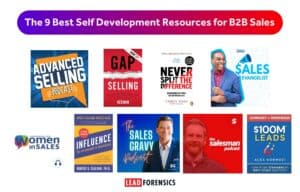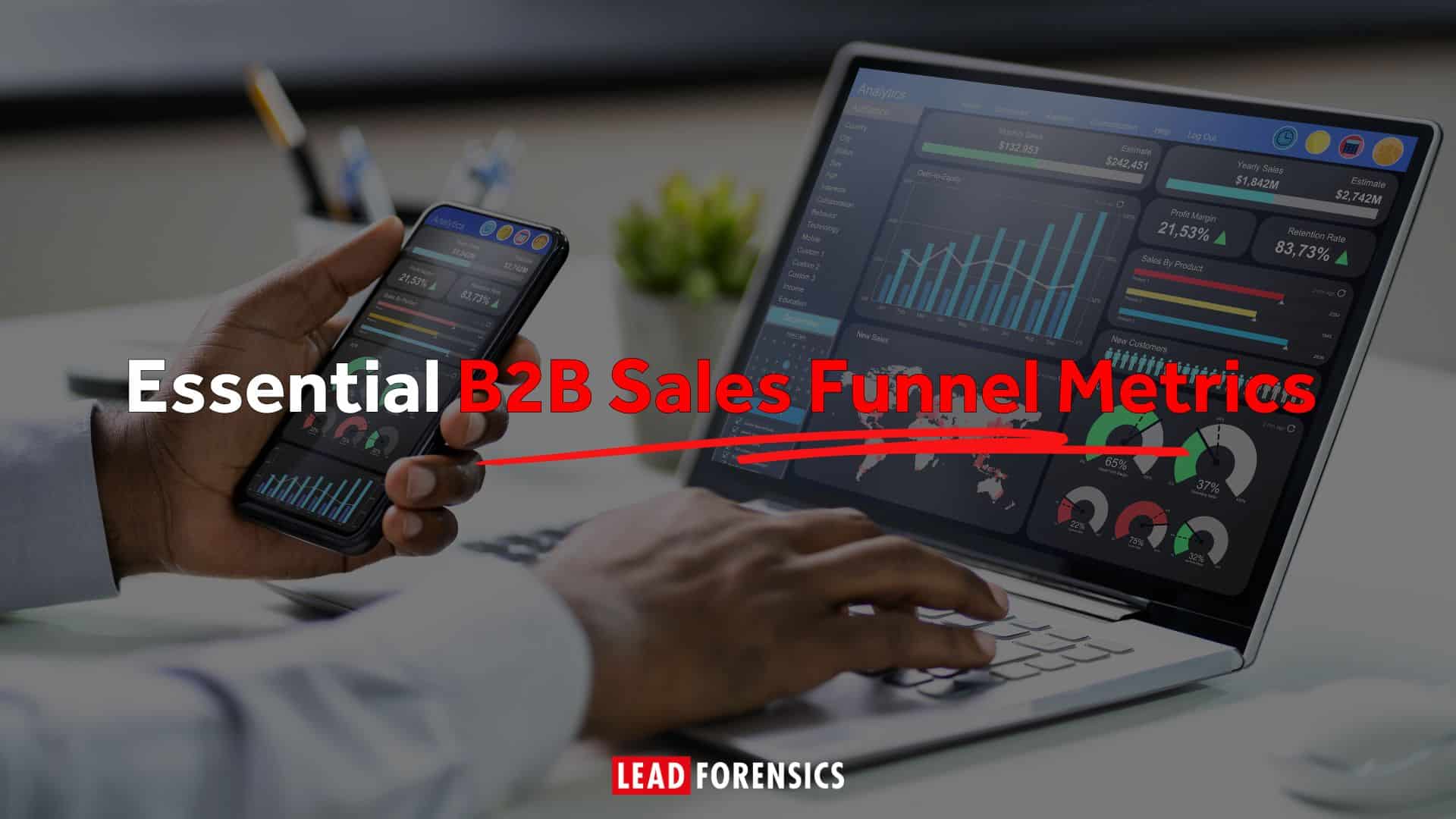It’s like watching a masterful conductor leading a symphony of trust-building, value-illustrating, and sales-cycle-turbocharging…
But mostly not.
We’ve all been there. The presenter is rattling off feature after feature, leaving your eyes glazed over like a couple of Krispy Kreme doughnuts… or they’re frantically searching for the right slide, stumbling through answers, and nervously sweating like they just ran a marathon.
That’s because crafting a high-impact demo requires skill, strategy, and maybe just a pinch of sales wizardry.
In this blog, we’ll explore the importance of demos in the sales process and address some common challenges in creating effective presentations that will help you to leave a (positive) lasting impression.
Want more tips on delivering the perfect demo? Check out our webinar, “Does Your Demo Deliver?”, with Daniel Hellerman from Saleo.
Introduction
Importance of demos in the sales process
Product demonstrations play a crucial role in bridging the gap between a prospective client’s needs and the solutions offered by your product. A well-designed demo not only showcases the features and benefits of your product but also provides a glimpse into how it can solve real-world challenges faced by the prospective client.
By doing so, a demo enables the audience to envision how your product can add value to their business, which in turn makes it more likely for them to consider investing in it.
A great demo helps build credibility, fosters trust, and strengthens the relationship with your audience, laying the groundwork for a successful sales process.
Common challenges in creating effective demos
Creating an effective demo is a delicate balance between addressing the specific needs of your audience and showcasing the capabilities of your product. Some common challenges faced in this process include:
Understanding the customer’s pain points: Gaining deep insights into the customer’s unique challenges and pain points is crucial for tailoring a demo that resonates with their needs. This requires strong discovery skills, active listening, and thoughtful questioning.
Personalizing the demo: To create a memorable and engaging experience, it’s important to personalize the demo for each prospect. This can be challenging when dealing with diverse audiences or industries, but the effort is well worth it when you can make a stronger connection with the client.
Balancing information and engagement: Striking the right balance between providing enough information to showcase your product’s value while keeping the audience engaged is essential. Avoiding information overload and maintaining a steady pace are important factors in ensuring your demo remains engaging throughout.
Technical glitches: Technical issues can disrupt the flow of a demo and distract the audience. Ensuring a smooth technical experience requires thorough preparation, contingency plans, and familiarity with the demo platform.
With a keen understanding of these challenges, you can design and deliver product demonstrations that not only captivate your audience but also set the stage for a successful sale. In the upcoming sections, we’ll discuss strategies to address these challenges and make your demo deliver on its promise.
The Power of Discovery
Discovery, discovery, discovery!
Daniel Hellman, an expert in the field of demo creation, emphasizes the importance of understanding real customer problems. In his words, “Discovery, discovery, discovery! There is no more important job… it’s every person on that call getting their discovery, getting their pain points, getting their problems, right?”
This quote highlights the necessity of going beyond surface-level insights to truly grasp the individual pain points of each potential customer.
It starts with the SDR and extends to account executives
Both SDRs and account executives should be well-versed in the art of discovery, as they play critical roles in gathering relevant information that helps create a tailor-made demo experience for each unique customer. Make sure you find out all there is to know from them!
How discovery helps tailor demos to the specific audience
By utilizing the information obtained during the discovery process, sales professionals can create highly targeted demos that resonate with their audience on a deeper level.
Rather than presenting a one-size-fits-all demonstration, a tailored demo allows you to showcase your product’s features and benefits in a way that directly addresses the unique challenges and concerns of each customer.
This customized approach not only increases engagement but also maximizes the likelihood of converting prospects into satisfied clients.
Want more tips on delivering the perfect demo? Check out our webinar, “Does Your Demo Deliver?”, with Daniel Hellerman from Saleo.
Crafting a Compelling Demo
Here are some steps to create a demo that’s less snooze-fest and more “sign-me-up”:
Research: Start by channeling your inner Sherlock Holmes, digging deep into your target audience’s specific needs, pain points, and goals. This will help you focus on what truly matters to them.
Helpful tip – when doing your research, Lead Forensics can show you when your prospects visit your site – and which pages they’re looking at. All very useful information to have ahead of a product demo!
Address the needs of everyone on the call: Make sure you are aware of who will be attending the demo, and tailor your pitch to address the needs of all attendees, not just one person. By showing how your solution benefits everyone, you can create a collective sense of excitement and commitment.
Focus on value: Highlight the value proposition and the unique selling points of your solution. Show how your product differentiates itself from competitors and why it’s the best choice for your audience.
Engage: Make your demo interactive and engaging. Involve your audience in the process, ask questions, and encourage them to share their thoughts and concerns. This not only helps you gather valuable feedback but also makes your audience feel heard and valued.
Tell a story: Weave a narrative around the problems faced by your audience and demonstrate how your product can solve those problems. Show the transformation and the positive impact your solution can have on their business.
Build momentum across the demo: As you present your solution, keep building on the story you’re telling and emphasize the benefits for each attendee. By the time you reach the mic drop moment, they should all be eager to see how your solution can make their lives easier and more productive.
Personalize the mic drop moment: Ensure that the most impressive part of your demo is tailored to your customer’s specific needs and interests. A one-size-fits-all approach might not resonate with everyone on the call.
Practice and iterate: Continuously refine and improve your demo based on feedback from your audience and your own observations. Practice your delivery and work on perfecting your timing, pacing, and storytelling.
Reducing Proof of Concepts and Speeding Up Deal Closure
Relevant Demos Lead to Fewer Proof of Concepts
In the words of Daniel Hellman from Saleo, “With our customers, on average, we’re seeing like a 70% reduction in the proof of concepts being asked for because the demo that you gave is already relevant.”
This insight highlights the importance of crafting tailored demos that directly address the needs and concerns of your prospective customers.
How effective demos save time and resources
An effective, targeted demo can save both time and resources for both the sales team and the potential client. By delivering a demo that convincingly demonstrates how your product addresses the customer’s specific problems, you can reduce the need for lengthy proof of concepts.
This not only saves time but also minimizes the costs associated with extended sales cycles and resource-intensive validation processes.
The impact of better demos on deal acceleration
Well-executed demos can have a significant impact on deal acceleration. When your demo clearly demonstrates your product’s value and relevance to the customer, you establish trust and confidence in your solution.
This, in turn, can lead to faster decision-making, reduced negotiation times, and ultimately, quicker deal closures. By focusing on creating demos that effectively address your customer’s needs, you can increase the likelihood of closing deals faster and more efficiently.
Conclusion
The Importance of Discovery, Addressing Real Problems, and Building Value for the Entire Team
In conclusion, the success of a product demonstration hinges on a strong foundation of discovery, addressing the real problems faced by potential customers, and building value for the entire team.
When sales professionals take the time to truly understand their clients’ pain points and tailor their demos to address these issues, they can create a more engaging and effective presentation that resonates with their audience.
“Building to that value and knowing each person’s problems is the only way to do a proper demo.”
As Daniel Hellman of Saleo emphasizes, “Building to that value and knowing each person’s problems is the only way to do a proper demo.” This statement serves as a powerful reminder that creating a demo is not just about showcasing a product’s features but truly understanding and solving the challenges faced by potential customers.
Evaluate and Improve Your Demo Process
We encourage all sales professionals to evaluate and continuously improve their demo process. By embracing the principles of discovery, addressing real problems, and building value for the entire team, you can create more compelling and effective demos that will not only impress your audience but also accelerate the sales process and help you close deals faster.
Remember, a well-crafted demo can make all the difference in winning over potential clients and securing their business.
Want more tips on delivering the perfect demo? Check out our webinar, “Does Your Demo Deliver?”, with Daniel Hellerman from Saleo.
About Lead Forensics
And there you have it – the secrets to creating a demo that captivates, engages, and ultimately drives success. But wait, there’s more! To truly elevate your demo game, consider using Lead Forensics. Our cutting-edge lead generation and analytics platform can provide the insights you need to create personalized, powerful demos that hit home with your audience.
Why not experience it for yourself? If you’re curious about how Lead Forensics can level-up your sales process, we invite you to request a demo with our team. We’ll not only show you the ropes but also demonstrate (pun intended) how our platform can empower your business to reach new heights.
So what are you waiting for? Get ready to unleash your demo potential with Lead Forensics! Request a demo today by visiting our website or giving us a call. We can’t wait to work with you on your journey to demo superstardom.










